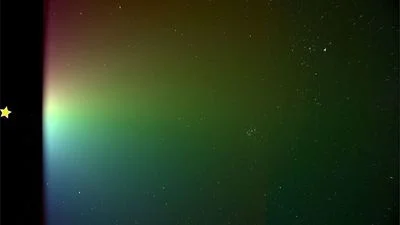
NASA’s PUNCH Mission Captures Stunning Images: From Eclipsed Sun to Cosmic Rainbow
NASA's PUNCH mission, a collection of four satellites launched to study the sun and its influence on the Solar System, has released its first set of awe-inspiring images. From capturing an eclipsed sun with a seemingly extra moon to revealing a vibrant “cosmic rainbow” in the zodiacal light, these early results showcase the mission's potential to revolutionize our understanding of space weather and the sun's corona.
Launched on March 11, PUNCH (Polarimeter to Unify the Corona and Heliosphere) aims to study the solar wind - the stream of charged particles emanating from the sun and causing space weather – by capturing images of the sun and the space between it and Earth. The mission recently completed its commissioning phase, a period of instrument testing and alignment, producing these incredible visuals along the way.

One of the most striking images showcases the sun seemingly eclipsed with the moon hovering nearby. This effect is achieved using an “occulter,” which blocks the sun's intense light, similar to how the moon creates a solar eclipse. This allows PUNCH to capture the delicate streamers and filaments that stretch from the sun's surface into the corona, the sun's outermost atmosphere.
But the visual wonders don't stop there. Another captivating image reveals a cosmic “rainbow” within the zodiacal light. This faint glow is created by sunlight scattering off dust particles orbiting the sun. Captured by the PUNCH mission's WFI-2 instrument on April 18, the image displays a colorful transition from red to green to blue, visualizing the polarization of the zodiacal light. NASA clarified that this “rainbow” isn’t a true optical phenomenon but a representation of different wavelengths of light to highlight the instrument's capabilities for analyzing components of the solar atmosphere.

The PUNCH mission isn’t just about pretty pictures. By studying the corona and solar wind in three dimensions through light polarization, NASA aims to understand how coronal structures transform into solar wind and how explosive events like coronal mass ejections propagate through interplanetary space.
According to Craig DeForest, PUNCH’s principal investigator, this mission's data will complement data collected by the Parker Solar Probe (PSP), enabling a much deeper understanding of the processes that drive the solar wind. This knowledge, in turn, can help to better protect Earth from potentially disruptive geomagnetic storms, which can cause power grid failures and disrupt satellites.
The mission's commitment to open science means that anyone can access the data collected by PUNCH. This will allow researchers worldwide to contribute to our understanding of the sun and its effects on our planet.
What do you think of these incredible images? How important is it to study space weather and mitigate its potential impact on Earth? Share your thoughts and opinions in the comments below!